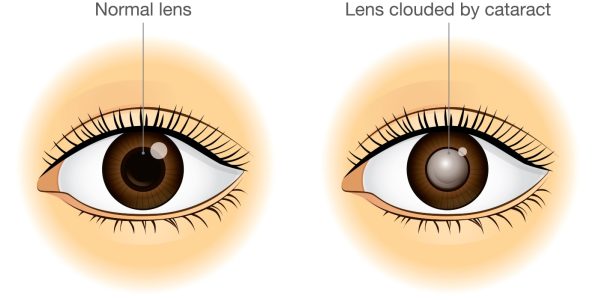
More than ever before, cataract patients enjoy an incredibly wide selection of intraocular lenses (IOLs), the advanced lens implants that bring life into clear focus after cataract surgery.
These plastic IOLs, originally designed only to efficiently imitate the eye’s natural lenses, now provide capabilities that transcend the limitations of the cataract-clouded lenses they replace. New IOLs allow patients to reduce and even eliminate reliance on prescription lenses. Below, Bay Area ophthalmologist and premium refractive cataract specialist Mark Mandel, MD explores the expanding array of IOL choices.
State-of-the-Art Multifocals
Multifocal IOLs represent the most dramatic improvement in IOL technology. As the name suggests, these lenses are able to focus on objects at various distances. Most offer two set fields of vision, but a new trifocal option allows clear vision at near, far and intermediate distances. Patients who receive these new trifocal IOLs can read a book, watch TV and look up to enjoy a sunset, all with the same permanent and resilient implanted lenses.
This new trifocal option is the AcrySof IQ PanOptix intraocular lens. It works by splitting light into three focal points: The intermediate focal point for these exceptional lenses is 60 cm, which is within the optimal range for performing tasks using digital screens. This is more practical than the 80 cm focal point used by some other lenses. The near vision focal point is 40 cm, an ideal distance for reading and other close-range tasks. The third focal point is infinity, allowing clear, panoramic views of the world around you.
In addition to PanOptix, the Vivity, Symfony and Tecnis lenses offer the greatest opportunity for cataract patients to achieve freedom from frames. The PanOptix, Vivity, Symfony and Tecnis multifocal lenses bring close and distant objects into focus without eye muscle assistance.
Sharp Vision, High Satisfaction
Although adults who needed glasses or contacts before cataract surgery may not achieve 20/20 vision with these advanced IOLs, almost all patients who receive the lenses will see a significant improvement in their vision. An estimated 80 percent of advanced IOL patients will have no need to rely on glasses or contacts, and nearly all will be able to pass a driver’s license exam without corrective lenses.
Many will not need reading glasses. To ensure freedom from reading glasses, patients have the option of selecting “blended vision,” in which one implant is adjusted for distance and the other for near vision.
If you would like to know more about cataract surgery and IOL choices, we encourage you to schedule a personal consultation with Bay Area ophthalmologist Mark Mandel, MD. Contact Optima Eye by emailing us or calling 510-886-3937 today.


